In Kent, UK, there’s an underground shrine-like place all covered in seashells – and mystery.
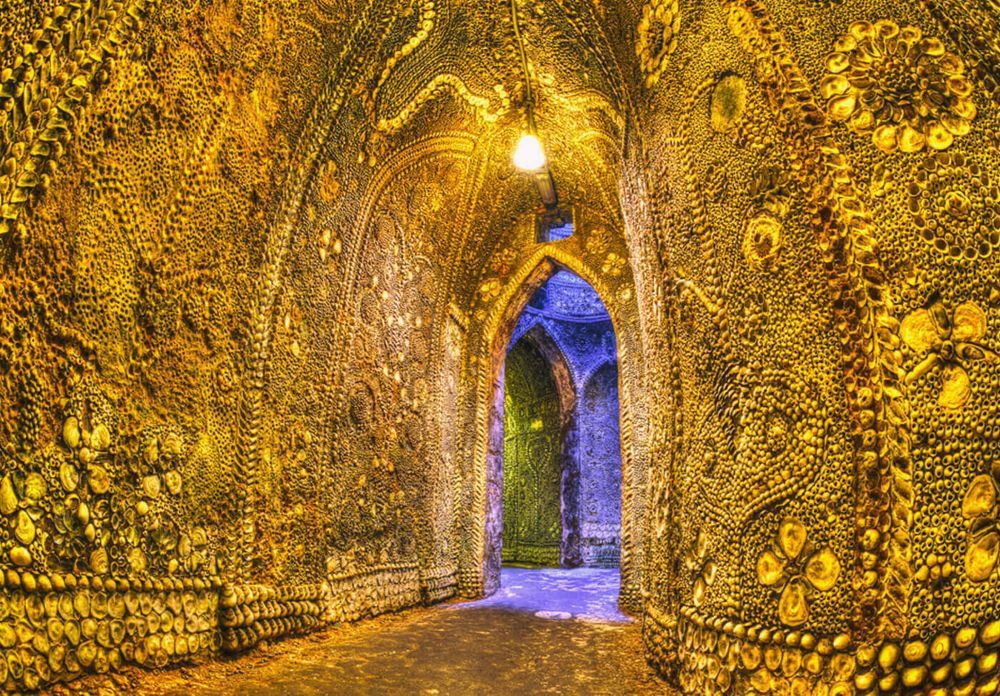
Image credit: mybestplace
If you are looking for a mysterious and fascinating attraction in Margate, Kent, you might want to visit the Shell Grotto. This hidden underground passage is decorated with millions of seashells, forming intricate patterns and designs. The origin and purpose of the Shell Grotto are unknown, but there are many theories and speculations about its history and meaning.
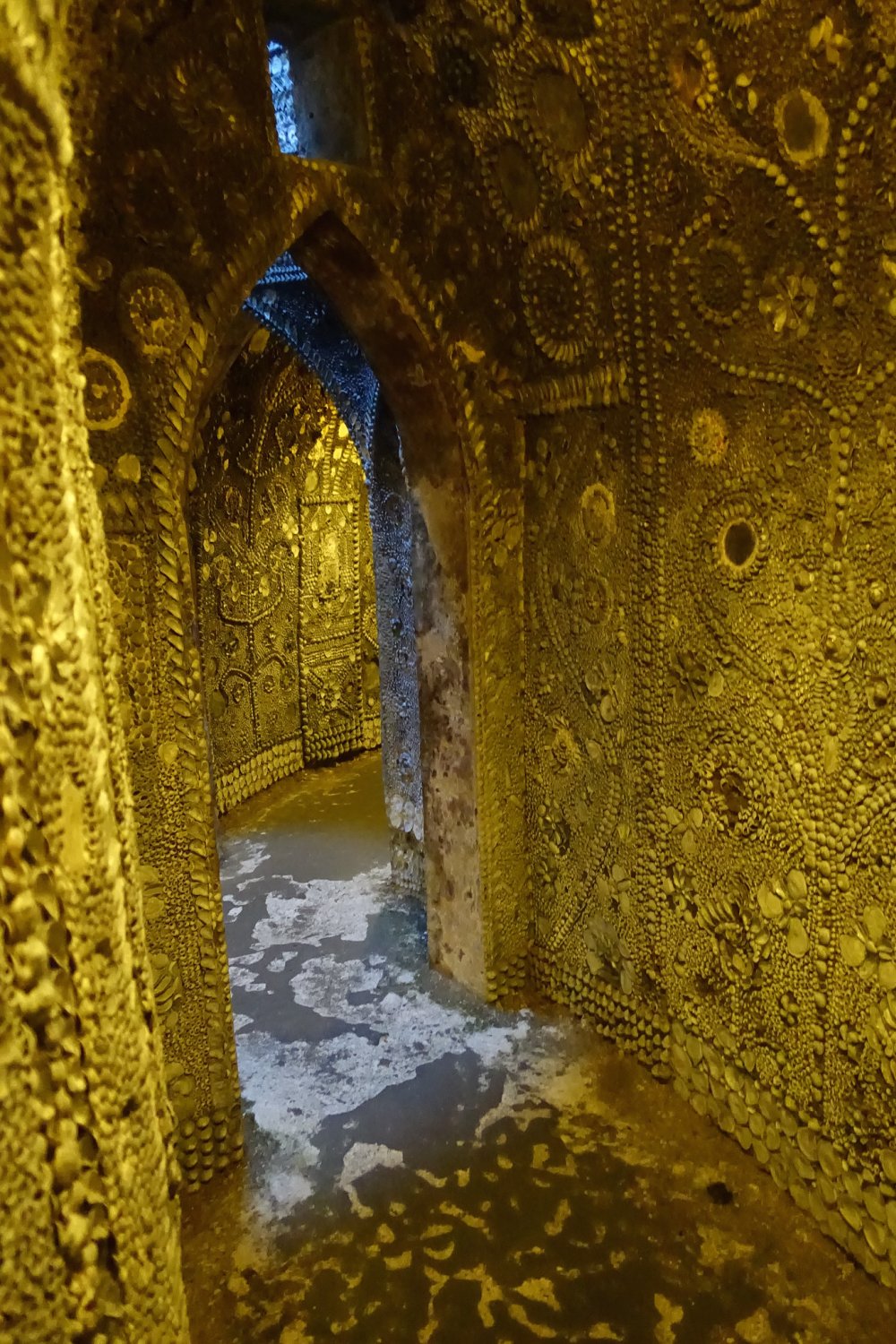
Image credit: Dexters Lab
The Shell Grotto was discovered in 1835 by accident, when a local man was digging a duck pond and found a hole in the ground. He lowered his son into the hole and he came back with a story of a beautiful cave full of shells. When his father and other people explored the grotto they found that it extended to a rectangular chamber with an altar-like niche. The grotto was opened to the public in 1837 and has been attracting visitors ever since.
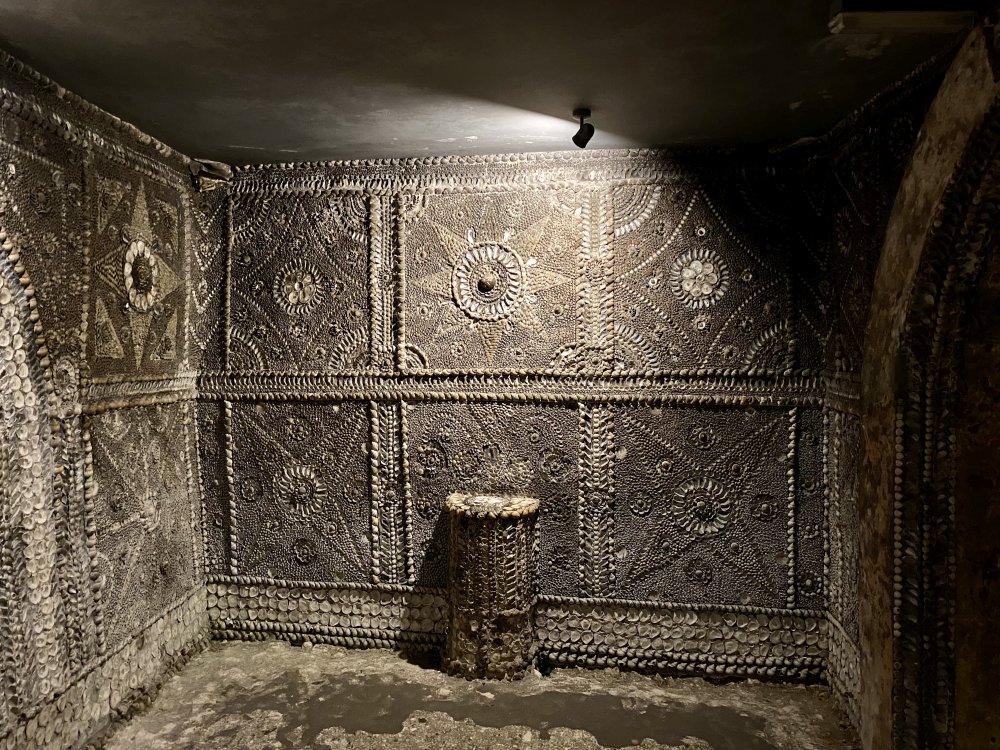
Image credit: No Swan So Fine
The Shell Grotto is composed of about 70 feet (21 meters) of passageway and a 15 by 20 feet (5 by 6 meters) room referred to as the Altar Chamber. The walls and ceiling of the grotto are covered with about 4.6 million shells, mostly oysters, mussels, cockles, whelks, limpets, scallops and winkles. They are arranged in various patterns, such as flowers, stars, suns, trees, animals and geometric shapes. Some of the shells have faded (the gas lighting used until 1932 had blackened the shells, which were once colorful) or fallen off over time, but the grotto still retains its original beauty and charm.
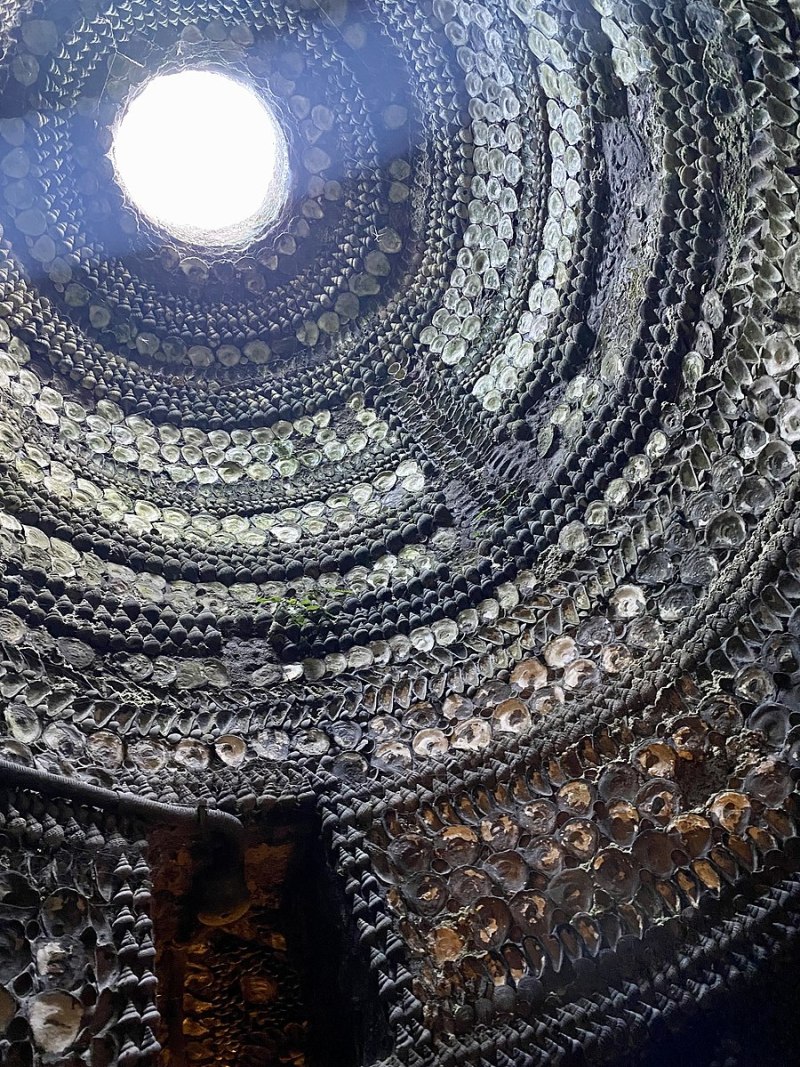
Image credit: No Swan So Fine
The Shell Grotto is one of the most intriguing and mysterious places in England. No one knows who built it, when it was built, why it was built, or what it was used for. Some of the possible explanations include:
- It was a rich man’s folly, built in the 18th or 19th century as a whimsical or eccentric decoration.
- It was a prehistoric astronomical calendar, aligned with the sun and the stars to mark important dates or events.
- It was a meeting place for sea witchcraft, where rituals and spells were performed using the shells as symbols or tools.
- It was connected with the Knights Templar or Freemasonry, who used it as a secret temple or initiation site.
- It was created by the Phoenicians, who were ancient seafarers and traders from Carthage and who may have visited Britain in the first millennium BCE.
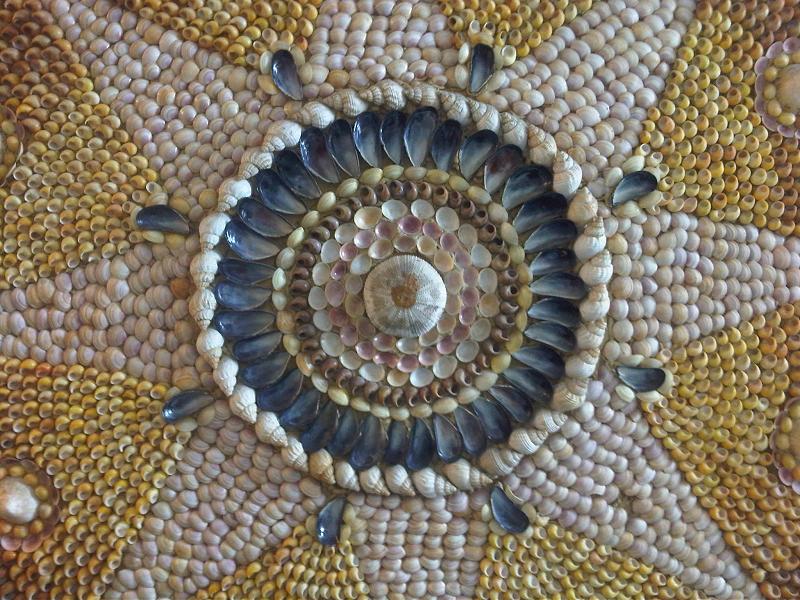
Image credit: Emőke Dénes
None of these theories have been proven or disproven conclusively, and the mystery of the Shell Grotto remains unsolved. However, this adds to its appeal and allure for many visitors who are drawn to its secret and beauty.

